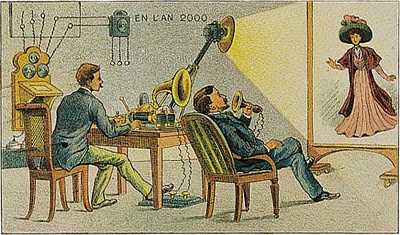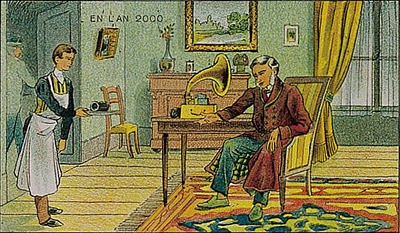One thing about the future is that we are constantly working out how to do things better. With technology this is quite clear. Better means faster, smaller, more efficient, more powerful.. In the case of social issues – things are often more complicated. However there’s one area I think we can clearly do better as a global society – that is making use of our collective knowledge more effectively.
There are so many problems in the world small and large. And so many people in the world who are able to solve them. The problem is that the best or most qualified people are often unaware that a specific problem exists. Problems are often shared at a local geographical level, or shared inside a particular discipline but this usually means that only people with certain qualifications see them. The beautiful thing about problems is that there are often many ways to solve them, yet due to the fact that the range of people aware of a problem is small – a full range of solutions never surfaces.This is why I love Crowdsourcing, and why it is the future.
Crowdsourcing puts a crowd of diverse people (united by interest) in front of a problem, and encourages an open-ended range of ways to solve it. This is great because it can open people’s eyes to a new way of solving a problem that may otherwise not have come to light without this diverse crowd. At the same time, Crowdsourcing is tremendously empowering because it doesn’t matter who you are or where you come from – as long as you can solve the problem. This has got to be a more efficient way of making use of our collective brain power than hiding problems away and exposing it to a few select “qualified” people.
There are some wonderful examples of Crowdsourcing out there. I had the priviledge of working on one for an app – ‘Do Some Good’. We ran a Crowdsoucing campaign to get ideas of ways in which people can volunteer time to charity in five minutes on their mobile phone. The range of ideas we got from the crowd was far greater than we could ever have managed as a small team on our own. There were ideas we simply couldn’t have thought of as we did not have experience or knowledge from the areas they came from.
Another fascinating example of Crowdsourcing and what it can do for creativity is Nokia’s classic ringtone re-make. Anyone who has watched Dom Joly with his oversize phone in Trigger Happy TV will know the one I’m talking about. Recently they held a competition to design a re-interpretation of the tune. The rules were simple – the ringtone must take less than 30 secs.. The range of submissions received was astounding. Only a crowd could have come up with such a range of answers.
And it’s rapidly becoming an established way of designing right now. Specialised crowdsourcing design agencies are beginning to appear such as DesignCrowd.com. Clients post problems, and crowds of designers work on the problem and submit their designs. The client then has many designs to choose from. Reward is shared among the Crowd of designers so that the winner is not the only one that gets paid.
There are many other developments which show how the benefits of Crowdsourcing are becoming more recognised such as the use of the Crowd to solve scientific problems which could have profound beneficial consequences for mankind. One example is using the Crowd to solve protein folding problems via a game. Another example is designing RNA strands with a view to producing cures to disease. Other sites such as Innocentive exist to allow problems to be solved for Corporate customers for a range of cash prizes
Recently Dell and Intel reported that Crowdsourcing is likely to be the way companies do things in the future. Companies will work more like film production companies do right now where bands of professionals come together for a specific need and then disband again.
Other Crowdsourcing efforts include ways to find funding for Start-Ups or inventors with ideas. Fundageek.com is one way where inventors with ideas can be matched up with funding from the Crowd. Financial support from the crowd is rewarded with goods-in-kind such as free copies of software.
We should keep a close eye on developments in Crowdsourcing. It’s going to become an increasingly normal way of doing many things in the future.













